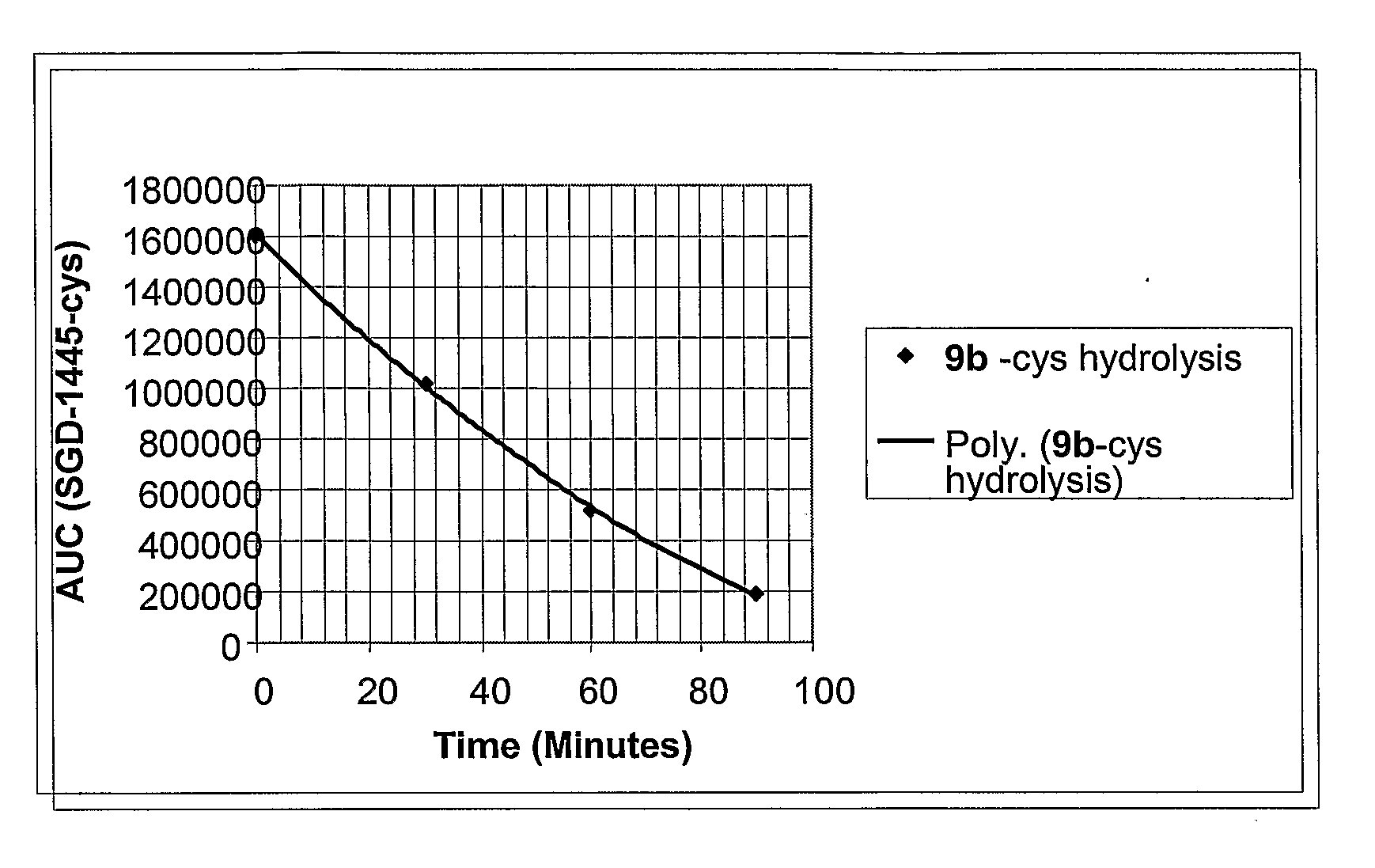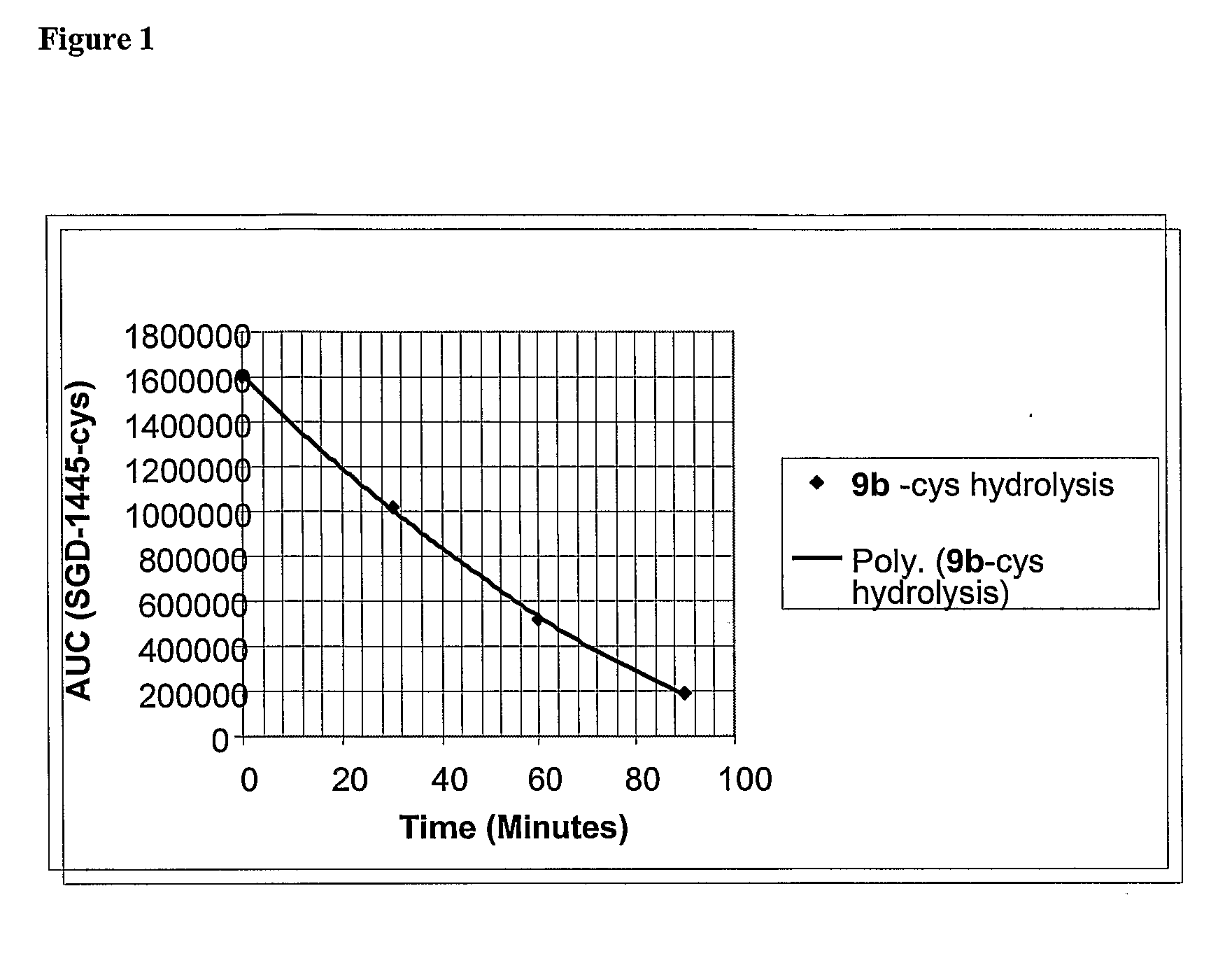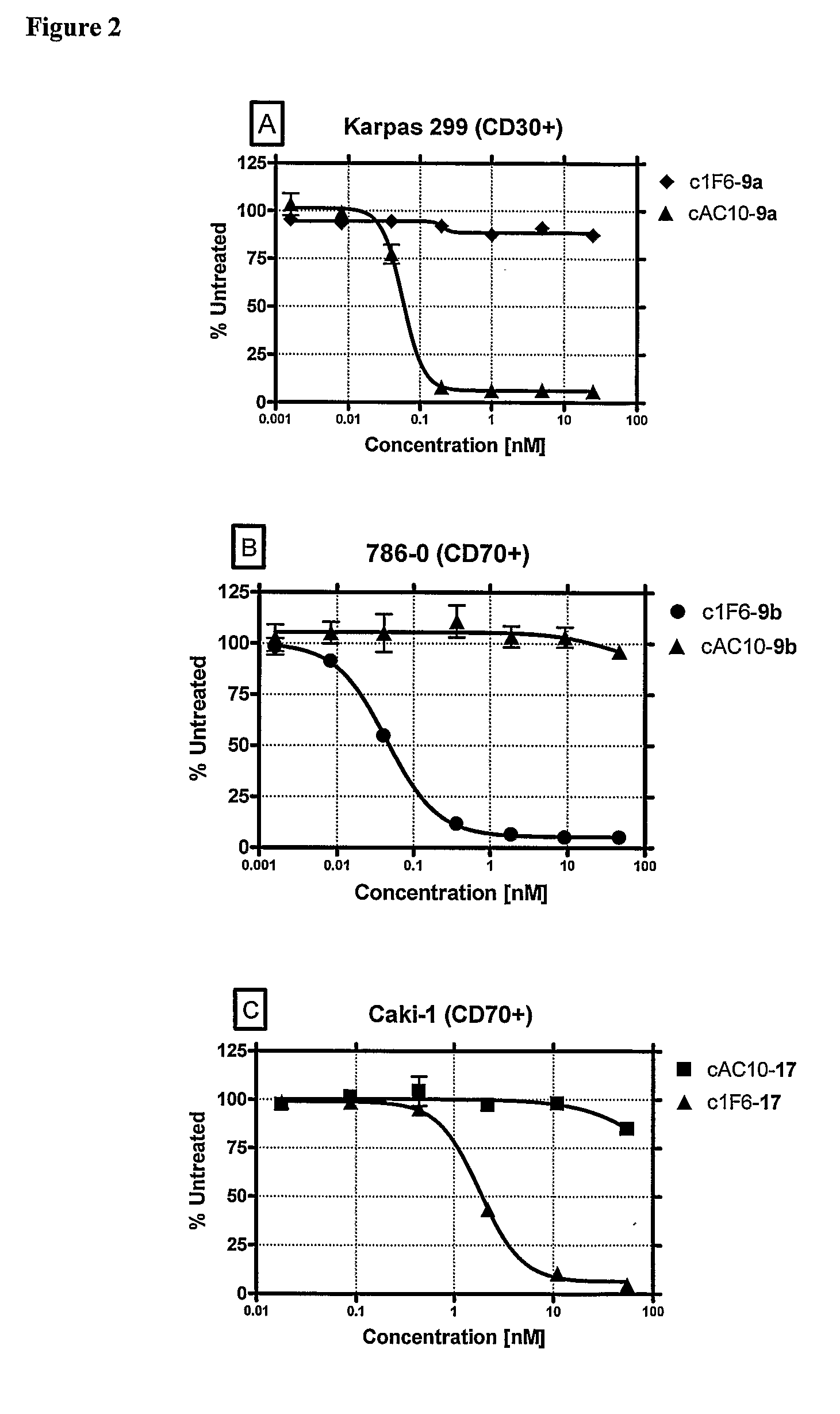Beta-Glucuronide-Linker Drug Conjugates
a technology of beta glucuronide and drug conjugate, which is applied in the direction of drug composition, immunological disorders, peptides, etc., can solve the problems of drug release outside the targeted tissue, systemic toxicity or organ-specific toxicity, and/or less than optimal therapeutic efficacy, and affect non-target toxicity
- Summary
- Abstract
- Description
- Claims
- Application Information
AI Technical Summary
Benefits of technology
Problems solved by technology
Method used
Image
Examples
example 1
Syntheses
[0358](2S,3S,4S,5R,6S)-methyl-6-(2-(3-(((9H-fluoren-9yl)methoxy)carbonyl-amino)propanamido)-4-(hydroxymethyl)phenoxy)-3,4,5-triacetoxy-tetrahydro-2H-pyran-2-carboxylate (11): To a solution of the aniline 5 (74 mg, 0.163 mmol) in dichloromethane (6 mL) was added DIPEA (57 μL, 0.33 mmol). The acid chloride 6 (65 mg, 0.20 mmol) was added and the mixture was stirred for 30 min. The mixture was poured into saturated aqueous sodium bicarbonate and was extracted with ethyl acetate (3×50 mL). The combined extracts were washed with water and brine and were dried over sodium sulfate. Filtration and concentration gave a residue that was purified via radial chromatography using 5% methanol in dichloromethane as mobile phase to give 106 mg (87%) of 11 as a white solid: 1H NMR (d6-DMSO) δ1.98 (s, 3H), 1.99 (s, 6H), 2.52 (m, 2H) 3.27 (m, 2H), 3.32 (s, 3H), 4.20 (m, 1H), 4.26 (m, 1H), 4.39 (d, 2H, J=6.3 Hz), 4.70 (d, 1H, J=9.7 Hz), 5.04 (t, 1H, J=9.6 Hz), 5.15 (m, 2H), 5.48 (t, 1H, J=9.4 H...
example 2
Synthesis of β-Glucuronic Acid-based Linkers and Antibody-Drug Conjugates
[0376]Drug-linkers employing a glucuronide-based linker unit with the antimitotic agents monomethyl auristatin E (MMAE; 1a) and monomethyl auristatin F (MMAF; 1b) and doxorubicin propyloxazoline (DPO; 2) were prepared and evaluated.
[0377]β-Glucuronide Drug-Linker Preparation: The starting point for the synthesis of a β-glucuronide drug-linker with MMAF (1b) was β-glucuronide 5 bearing the free aniline and hydroxy groups (Scheme 3, infra). This compound was acylated with the acid chloride 6, and then converted to the p-nitrophenyl (PNP) carbonate 7. Reaction with MMAF (1b) afforded the carbamate 8. This molecule was converted to the desired glucuronide drug-linker 9b by first saponifying the acetate and methyl ester protecting groups with lithium hydroxide (Leenders et al., 1999, Bioorg. Med. Chem. 7:1597-610), Fmoc removal with piperidine and capping of the resulting free amine with maleimidocaproyl N-hydroxys...
example 3
E. coil β-glucuronidase Reactivity
[0383]The susceptibility of the β-glucuronide linkers to enzymatic cleavage was determined by treatment of the cysteine adduct of compound 9b with β-glucuronidase. A commercially available E. coli β-glucuronidase (EC 3.2.1.31) was in place of the human enzyme for this study. This allowed confirmation that the desired drug, MMAF (1b), was released and if any stable intermediates were formed in the process.
[0384]β-glucuronidase Reactivity. To water (90 μL) was added cysteine (12.5 μL of a 0.1 mM solution) and pH 9 borate buffer (12.5 μL of a 30 mM solution). This was followed by the addition of 9b (10 μL of a 10 mM DMSO solution). HPLC inspection after 5 min revealed complete conversion to cys-9b. To 440 mL of PBS was added the cys-9b solution (50 μL; 40 nmol) followed by a solution of E. coli β-glucuronidase (Sigma: E.C. 3.2.1.31 Type IX-A; 10 μL of a 1 mg / mL solution in PBS; 3.6 μg, 13 pmol) and the reaction mixture was incubated at 37° C. Aliquots ...
PUM
| Property | Measurement | Unit |
|---|---|---|
| weight | aaaaa | aaaaa |
| covalent | aaaaa | aaaaa |
| stability | aaaaa | aaaaa |
Abstract
Description
Claims
Application Information
 Login to View More
Login to View More - R&D
- Intellectual Property
- Life Sciences
- Materials
- Tech Scout
- Unparalleled Data Quality
- Higher Quality Content
- 60% Fewer Hallucinations
Browse by: Latest US Patents, China's latest patents, Technical Efficacy Thesaurus, Application Domain, Technology Topic, Popular Technical Reports.
© 2025 PatSnap. All rights reserved.Legal|Privacy policy|Modern Slavery Act Transparency Statement|Sitemap|About US| Contact US: help@patsnap.com



